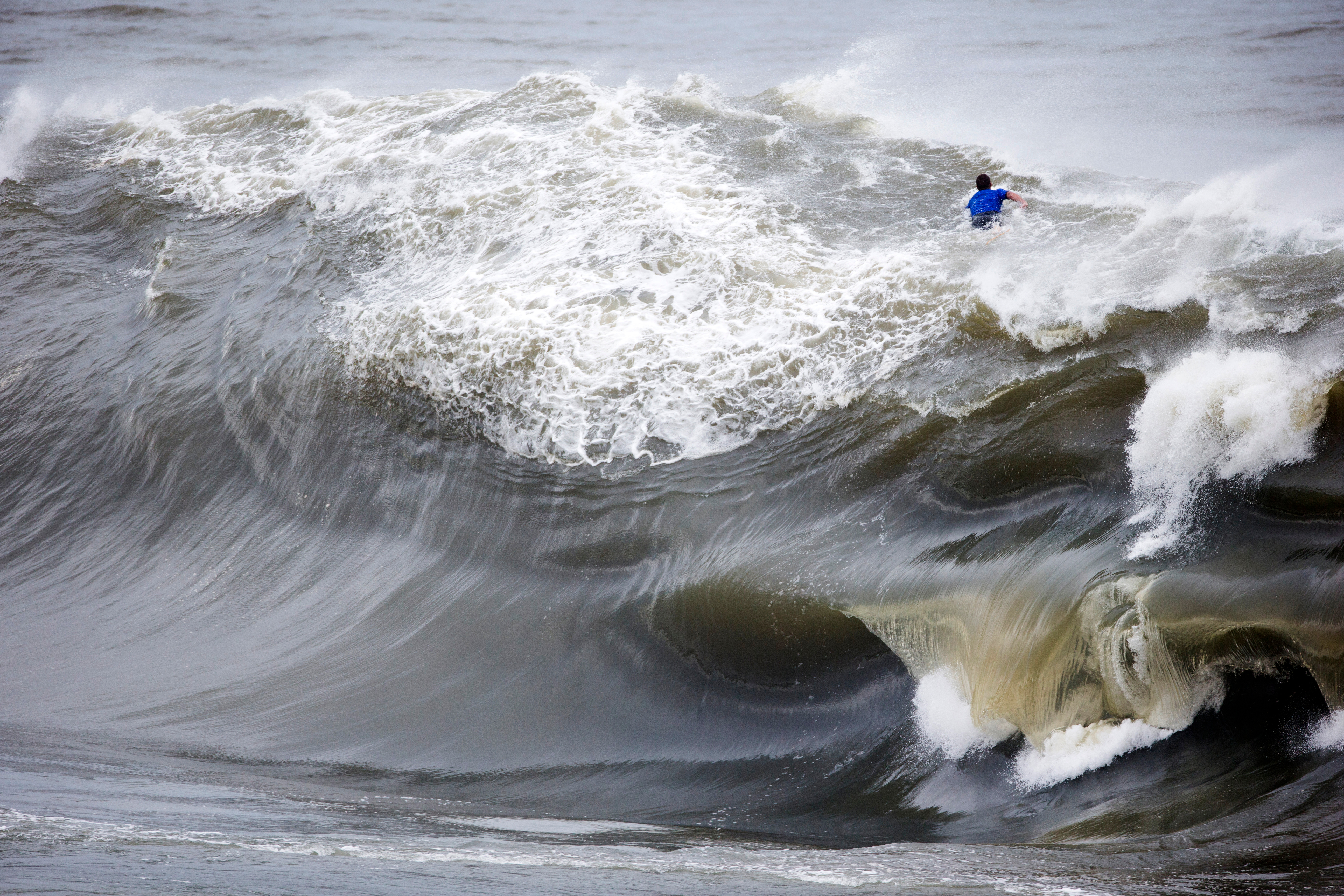
Double-up waves are a striking and relatively rare type of ocean wave and simultaneously a challenge for advanced surfers.
A double-up wave is as spectacular as weird and unusual.
It somehow defies the common understanding of what a normal oceanic wave is. Why? Because it morphs and eventually becomes two waves.
These freaks of Nature are characterized by their immense power and distinctive structure and have a reputation for being both exhilarating and dangerous.
But how do these mutant liquid walls of water work?
A double-up wave forms when the crests and troughs of two separate waves align and merge, creating a singular and uneven amplified wave.
The merging is not merely the simple addition of two waves’ energy but a complex interaction that leads to a distinctive wave formation, often marked by a midface step.
Consequently, the resulting wave is not just larger in size but also more powerful and unpredictable, making it a challenge for surfers to ride.
Sometimes, it’s just impossible to surf it.

The Ducklings Theory
According to oceanographers, the existence of nearby outer sandbars or reefs can divide a single band of wave energy into a main wave just behind a set of secondary waves.
Tony Butt, a surfer, physical oceanographer, and author of the book “Surf Science,” once compared double-up waves to a “family of ducks, where the mother duck has her ducklings in front of her instead of behind.”
As the group of waves moves toward the beach, the smaller waves slow down and embed themselves back into the face of the bigger wave, thus creating a morphing wave event.
According to the ocean researcher, double-up waves happen more often when the swell period is long.
A long swell period means the waves are more spaced out, giving them more time to interact with underwater structures like sandbars or reefs.
The interaction enhances the chances of wave energy alignment, resulting in a double-up wave.
Nevertheless, it can also form from intersecting “rebound” swells at locations like Newport Beach’s The Wedge or Sydney’s Cape Fear.
In places with extreme deep-to-shallow reef breaks, such as Tasmania’s Shipstern Bluff, the double-up effect becomes so intense and pronounced that these waves are often referred to as “slabs.”
These waves are especially dangerous due to the abrupt transition from deep to shallow water, which amplifies the wave’s power and creates a highly treacherous surf environment.

Risk Vs. Reward
Surfing a double-up wave is complicated, and the success rate is low.
These waves are known for their unpredictability, with the midface step often creating a sudden, steep drop that can catch surfers off guard.
The intense power of a double-up wave can make it unrideable under certain conditions, leading to wipeouts that are not only inevitable but also potentially dangerous.
However, for those with the skill and bravery to tame these waves, the rewards can be massive.
When conditions are right, a double-up wave can offer the ride of a lifetime, providing a massive, spit-filled tube that few other waves can match.
The experience of getting barreled in such a wave, surrounded by the roaring sound of the water, could translate into the ride of a lifetime.
Before you adventure yourself, study the wave, observe it for hours, and gather a team of experts and lifesavers.
The chances it can go wrong are high, so minimizing potential risks is mandatory.
Words by Luís MP | Founder of SurferToday.com



